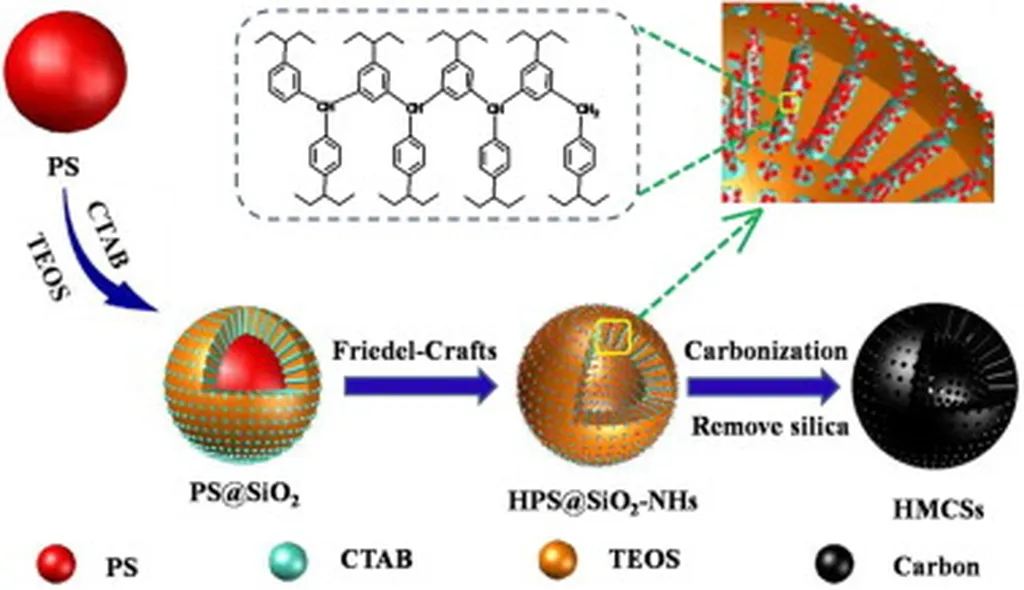In a significant stride toward enhancing energy storage technologies, researchers have developed a novel composite material that could revolutionize the performance of supercapacitors. The study, led by Xiaona Wan from the Guilin Institute of Information Technology and Lanzhou University of Technology, focuses on the fabrication of hollow composite microspheres combining multi-walled carbon nanotubes (MWCNTs) and polyaniline (PANI). This breakthrough, published in the journal “Materials Research Express” (translated as “Materials Research Express” in English), holds promising implications for the energy sector, particularly in the realm of high-performance supercapacitors.
The research team employed a sophisticated layer-by-layer (LbL) self-assembly technique, utilizing polystyrene microspheres as sacrificial templates. This method allowed them to create hollow composite microspheres with exceptional electrochemical properties. “The key to our approach lies in the synergistic integration of MWCNTs and PANI,” explained Wan. “The carbon nanotubes provide electric-double-layer capacitance, while the PANI contributes pseudocapacitance, resulting in a significant boost in overall performance.”
The electrochemical evaluations revealed that the specific capacitance of the composites increased progressively with the number of LbL deposition cycles. Notably, an electrode consisting of PANI and five layers of functionalized MWCNTs with a hollow morphology, designated as (PANI/f-MWCNTs)_5 HM, exhibited a high specific capacitance of 454.0 F g^−1 at a current density of 0.5 A g^−1. Moreover, it maintained 63% of its initial capacitance when the current density was increased to 4.0 A g^−1, demonstrating superior rate capability.
The hollow architecture of the composite microspheres plays a crucial role in facilitating ion transport, which is essential for the efficient operation of supercapacitors. “The hollow structure not only enhances the surface area but also promotes better ion diffusion, leading to improved electrochemical performance,” added Wan.
However, the study also highlighted a limitation in the cycling stability of the electrode, with a capacitance retention of only 40.7% after 1,000 charge–discharge cycles. This issue is primarily attributed to structural degradation arising from the relatively thick active layers. “While our findings are promising, further optimization is necessary to improve the long-term durability of these materials,” noted Wan.
The research presents a promising strategy for designing high-performance supercapacitor electrodes, which could have significant commercial impacts in the energy sector. Supercapacitors are increasingly being used in various applications, including renewable energy storage, electric vehicles, and portable electronics, due to their high power density and long cycle life. The development of advanced materials like the MWCNT/PANI composite could pave the way for more efficient and durable energy storage solutions.
As the demand for sustainable and reliable energy storage technologies continues to grow, innovations in materials science will play a pivotal role in shaping the future of the energy sector. This study not only advances our understanding of composite materials but also opens up new avenues for research and development in the field of supercapacitors. “We are excited about the potential of our findings and look forward to collaborating with industry partners to bring these technologies to market,” concluded Wan.
With further optimization and scaling-up, the MWCNT/PANI composite could become a game-changer in the energy storage landscape, contributing to a more sustainable and energy-efficient future.

